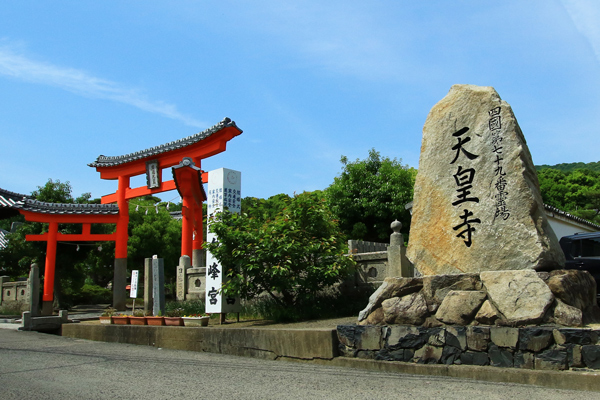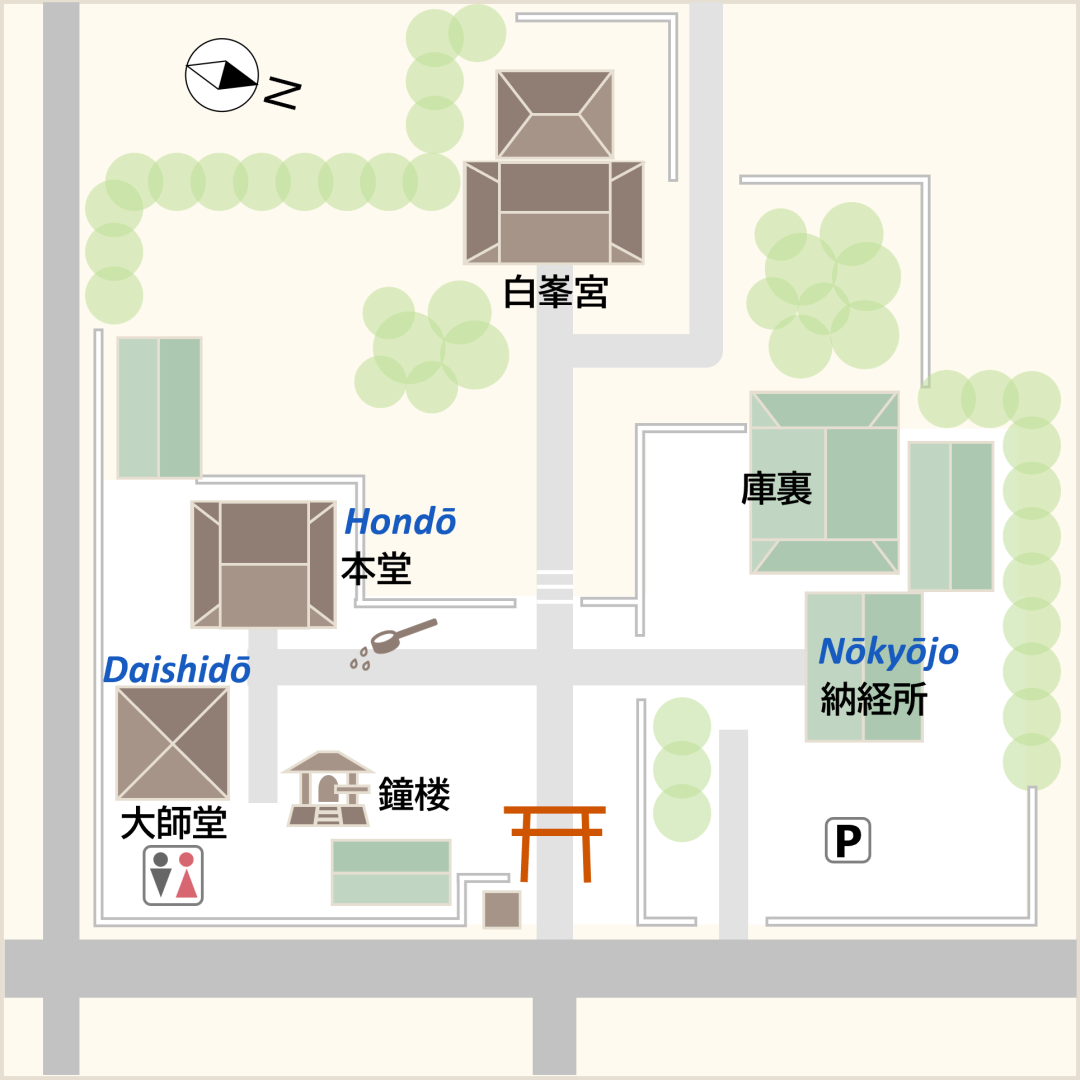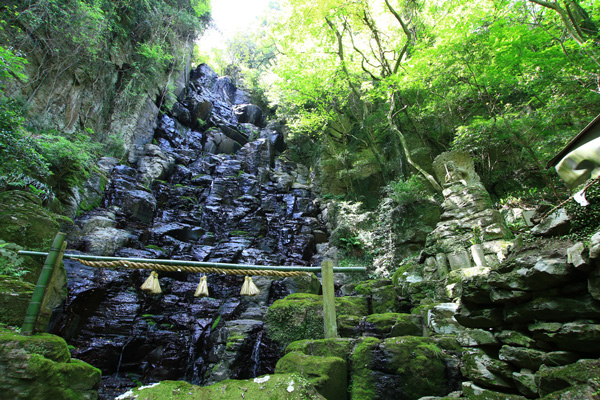The Shikoku Pilgrimage Temple Guide
Temple 79, Tennōji

Precinct map

History of the temple
During the Tempyo period (729-749), Gyoki visited this area on a pilgrimage to Shikoku. There is a mountain here that produces a lot of ore here. Gyoki named this mountain "Kanayama" and believed that it was inhabited by Kanayama-hime and Kanayama-hiko, gods of the mines in Japanese mythology. He built the Kanayama Manishuin Temple with a principal image of Yakushi Nyorai (Medicine Buddha) in the middle of the mountain, indicating that this area was a place of syncretism between Shintoism and Buddhism.
During the Kōnin period (810-824), Kukai/Kobo Daishi came here, moved the decayed Kanayama Manishuin to its present location, and changed its name to Kinkazan Myōjōjuzi Manishuin. What motivated Kukai was his encounter with Kanayama Gongen, the protector of the sacred mountain of Kanayama, and the divine water that gushes from the hillside of Kanayama. Convinced that it was possible to revive all things, Kukai carved the Juichimen Kannon Bosatsu (Eleven-faced Bodhisattva Who Hears the Sounds of the World), the Amida Nyorai (Buddha of Limitless Light and Life), and the Aizenmyōō (Love-dyed Wisdom King), and enshrined them in the temple.
Emperor Sutoku was exiled here after his defeat in the Hogen Rebellion (a civil war in Kyoto in 1156) and died here. After his death, the temple had a memorial service for for the emperor and a shrine dedicated to him was constructed on the temple grounds. Emperor Gosaga made an imperial decree that memorial services for Emperor Sutoku should be performed here forever. Therefore, the temple is called the Temple of Memorial Services for Emperor Sutoku and the Temple of Emperor Sutoku. In the Meiji era (1868-1912), the temple was once abandoned due to the government's abolitionist movement, the present Kinkazan Kōshoin Tennōji was established through the efforts of the head priests of branch temples and others.
Highlights
Shiroyama Fudo Waterfall
The inner sanctuary, Manishuin, is located halfway up Mt. Shiroyama to the south of the Tennōji, and further on is the Shiroyama Fudo Waterfall with a drop of 15 meters. Fudo Myoo is enshrined right next to the waterfall, and it is said to have been a place of waterfall practice for Shugendo (mountain asceticism) since ancient times.
Hondo
The principal image of Juichimen Kannon Bosatsu is related to two teachings intended to save the mankind, a teaching of the Diamond Realm and a teaching of the Womb Realm. It is customary to pray at both the front and the back of the Hondo, the front representing the Diamond Realm teaching and the back representing the Womb Realm teaching.
Daishido
A statue of Yakushi Nyorai, the principal image of a branch temple that made tremendous efforts to reestablish Tennōji, is displayed in front of the Daishido.
Miwa Torii
A vermilion-colored torii gate stands tall in the precincts of Tennōji. This is the Miwa Torii, which is the same type of gateway as that of the Ogami Shrine in Nara Prefecture. It signifies that the precincts of the temple are sacred to Miwa Shinto, which is derived from Ryobu Shinto. To the left of the torii gate is a Gejoishi stone donated by Minamoto no Yoritomo. The Emperor Sutoku Shrine (now called the Shirominegu Shrine) is located in front of the temple.

Details
Names: Kinkazan, Kōshoin, Tennōji
Denomination: Shingon sect, Omuro school
Principal Image: Juichimen Kannon Bosatsu
Founder: Gyoki
Restorer: Kobo Daishi
Founded: Tempyo era (729-749)
Access
Address: 1713-2, Tenno, Nishinosho-cho, Sakaide City, Kagawa 762-0021
Phone: 0877-46-3508
Parking: Available (Only regular vehicles are allowed on the premises. Microbuses and large buses must use Prefectural Route 33)
Lodging: None
Official website: None
